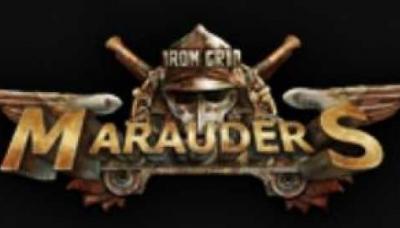Iron Grip: Marauders (0)

Iron Grip: Mauraders is a free-to-play game that has some light RPG and economy elements akin to those in casual games like Mafia Wars, and pairs them with tactical turn-based combat.
Story
You play as the captain of an airship in a steampunk inspired universe where piracy, raiding and smuggling are endemic.
Gameplay
Gameplay takes place in two distinct game spaces. The primary interface is a series interconnected, mostly static mouse menus through which the player chooses quests, queues up infantry and mechanized units for production, shops and researches upgrades. The menus are essentially dressed up web pages.
There is virtually no animation, no sound effects or music, and no avatar. Thus the player's actions in this portion of the game are abstract and given their meaning through text. For example, to train a bazooka unit for use in the combat portion of game, the player clicks on an icon representing the barracks aboard the airship. A new menu opens with infantry unit options, their stats and the cost of production in units of gold, iron and actual time. Clicking the bazooka unit adds it to a training queue, deducts the gold and iron cost from your balance, and starts a countdown until the unit is ready.
Quests that lead to the combat portion of the game are selected in a similar, menu-driven fashion. Taking on each quest or mission consumes a few units of the player's energy, which recovers over time.
After accepting a quest, the last step before a separate window launches to begin combat is selecting which units to send into the fight. One hero unit must be deployed, and that hero's stats determine how many additional units you can deploy.
Combat
Combat takes place in a separate window with a more robust presentation. Units animate, music sets the mood and sound effects sell the action.
Combat is turn-based and takes place on grid-based, two dimensional maps (with up to two discrete elevations). Units are individually issued orders. Tactical considerations such as fog of war, line of sight, firing range, and weapon effectiveness against infantry or armor must be considered to minimize losses.


